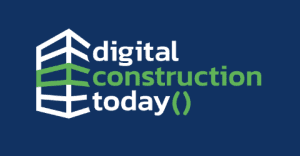Digital Construction Today, a new website covering the adoption and application of technology in the global architecture, engineering and construction sectors, is now live
At a time when the industry faces the dual challenges of embracing digital transformation and spearheading the decarbonisation of the built environment on the road to net zero, DCT brings you daily news from around the world, as well as thought leadership, opinion and insights from experts and insiders working across the Americas, Europe, Asia, Africa and Australia.
We look at everything from BIM, digital twins and IoT to the emerging and evolving fields of AI, 3D printing and scanning, AR/VR and drones.
Better information management and global “megatrends”
DCT has launched with a range of informative features from expert authors.
Dr Johnny Fortune, executive director of the National BIM Program at the National Institute of Building Sciences, looks at the launch of the National BIM Standard United States and the importance of supporting better information management across the industry.
We also hear from Dan Benhamou, senior vice-president at global asset management specialist Brookfield, who examines the three “megatrends” shaping the world’s supply chain infrastructure.
Benhamou takes us through the three Ds – digitalisation, decarbonisation and deglobalisation – that are transforming logistics on a global scale, from automation and data-driven decision-making to sustainability strategies for logistics and a trend towards a more regional, “nearshoring” approach.
AI: The next frontier
Meanwhile, Shanthi Rajan, CEO of multinational construction management software giant Linarc, discusses the “next frontier” of construction – the emerging role of artificial intelligence.
Generative AI-driven design platforms, material optimisation tools and energy simulation and analysis offer transformational potential in improving innovation, efficiency and sustainability across the built environment, she argues.
AI, through the application of computer vision and sensor integration, has also already begun to significantly alter how safety is managed on construction sites.
These applications include real-time monitoring, sensor integration for environmental hazard detection, predictive analytics for accident prevention, safety belt detection systems to prevent falls and machine learning for safety training customisation.
In addition, integration with AI offers a “serious upgrade” for BIM, Rajan says.
AI is increasingly capable of scanning BIM models, reducing the time required for model verification and ensuring that potential clashes are addressed early in the design phase, avoiding costly rework later on.
It can also analyse historical data and current project inputs to predict project timelines, budget overruns and potential bottlenecks.
Predictive models, integrated with BIM, can also foresee implementation challenges, harnessing real-time input from imagery, IoT sensors, project timelines and more, AI can identify potential errors.
And there is the key question of sustainability. AI can analyse BIM data to recommend the materials and construction methods that minimise environmental impact, contributing to greener buildings.
However, Shanthi cautions, there are a number of barriers to overcome if AI in construction is to realise its full potential, from education and training, investment in technology and interoperability to building trust and allaying fears over job displacement.
Digital design for bridges
Digital Construction Today also explores the real-world impact of AEC technologies on major projects.
César Flores Rodríguez of Nemetschek Group and Dr Detlef Schneider, CEO of Allplan, explore how [LINK – tools such as BIM, IoT and digital twins can help to significantly simplify planning, reduce costs and improve the operational efficiency of bridge models at any stage of the lifecycle.
Construction as an industry has long been blighted by silo working and a lack of project collaboration.
There are, however, success stories out there showing how digital tools can make planning more collaborative and efficient; where silos are replaced by workflows.
The Mantes-la-Jolie viaduct, west of Paris, has harnessed BIM to ensure a high degree of accuracy in the design of the 600m S-shaped viaduct, improved project documentation and better communication through 3D models rather than 2D drawings.
In Hamburg, the Köhlbrand Bridge, the second-longest road bridge in Germany and one of the busiest, has adopted a digital twin under the smartBRIDGE project to provide real-time monitoring that detect any deficiencies that could affect its safety and operation. This allows any necessary repairs to be planned at an early stage, ensuring disruption to traffic in this busy port city is minimised.
The digital twin, which saw a BIM model of the bridge created from scratch, also allows the simulation of various scenarios to be carried out so operators can detect potential problems and evaluate the results before implementing solutions.
Read, like and share
This is just a flavour of the industry insights already available on Digital Construction Today. There much more available on the site – and much more to come.
To make sure you are kept up to date, you can sign up to our free newsletter via the DCT website, and like and follow our social media channels on X and LinkedIn.

















